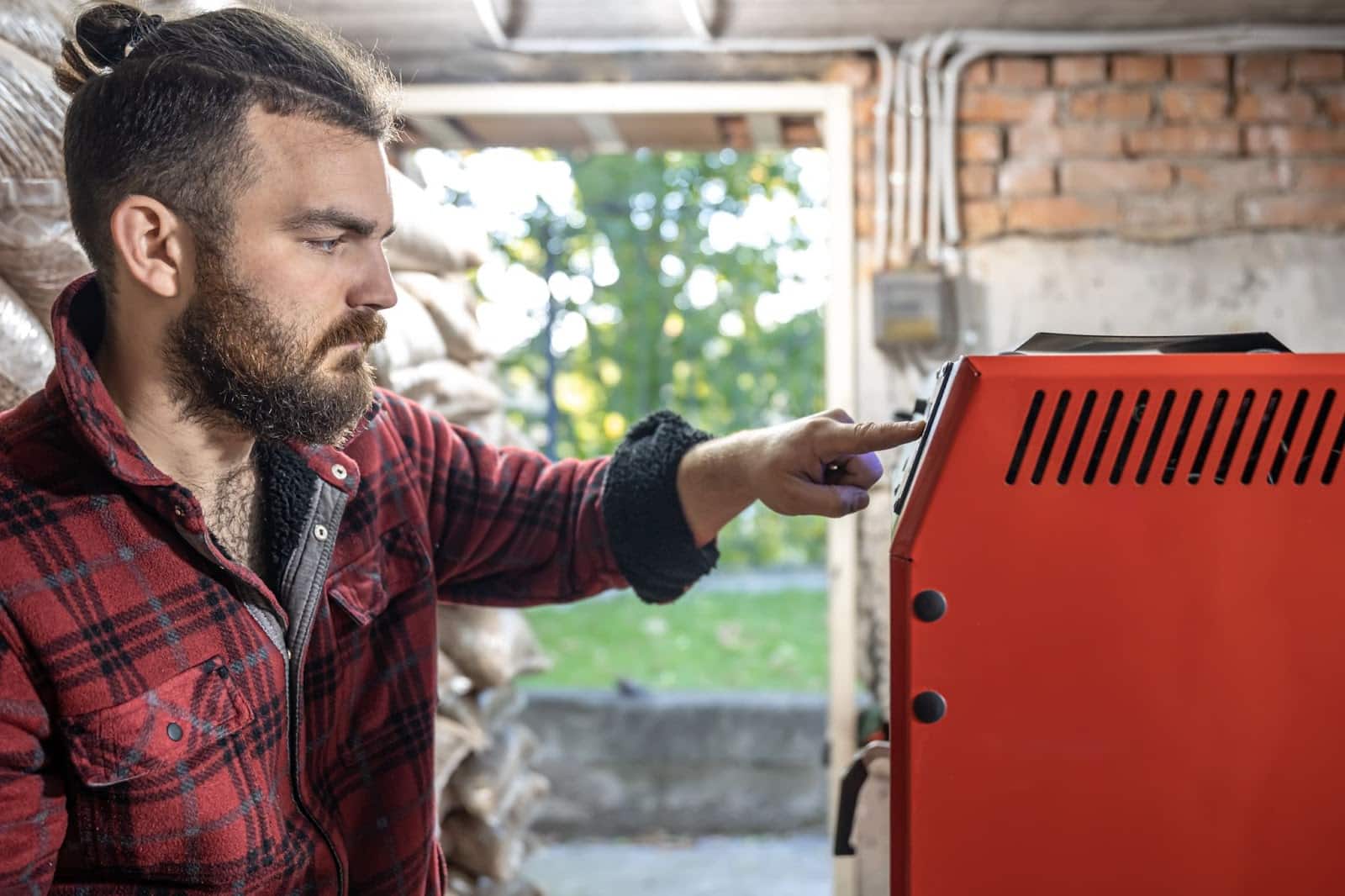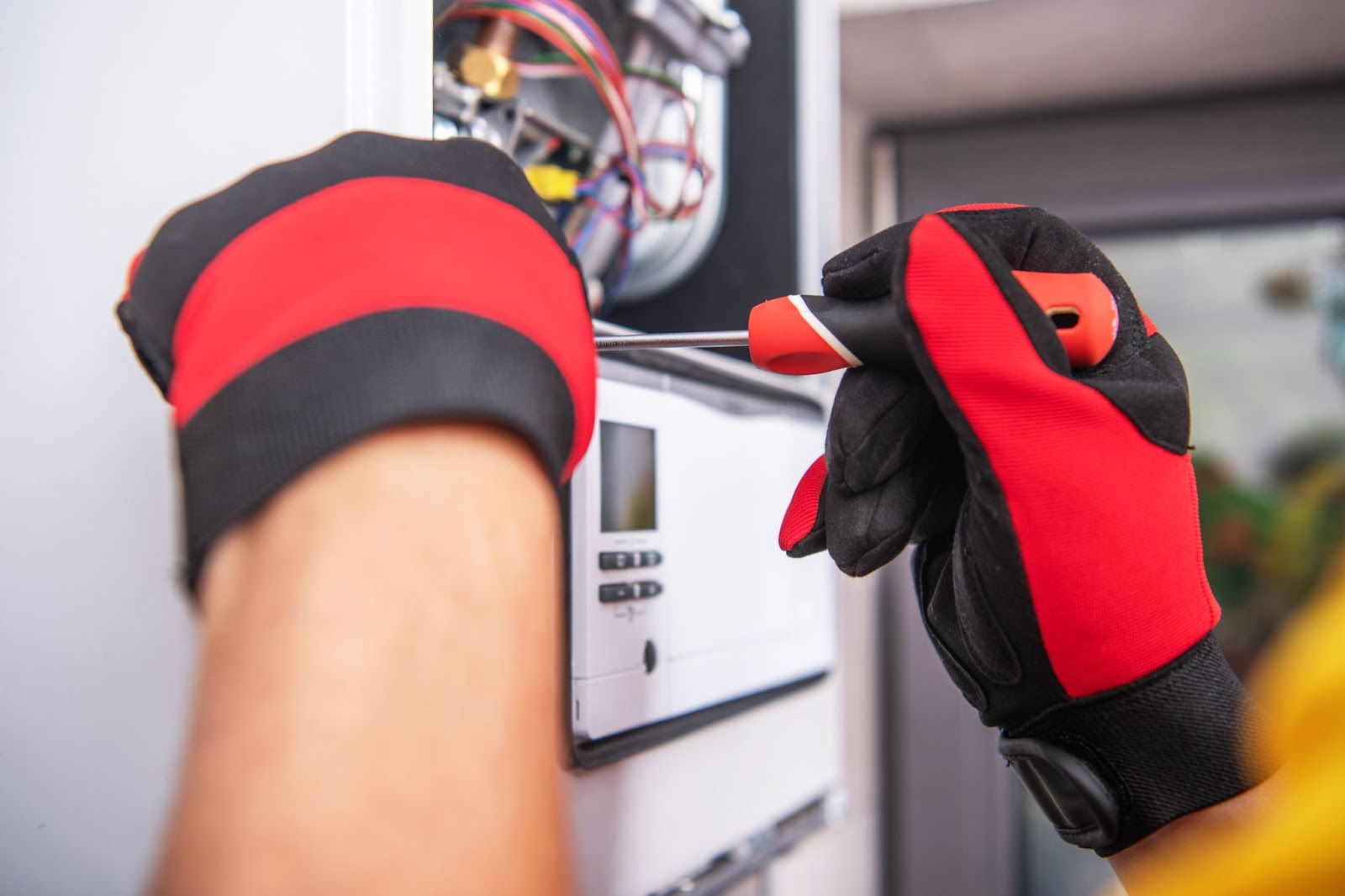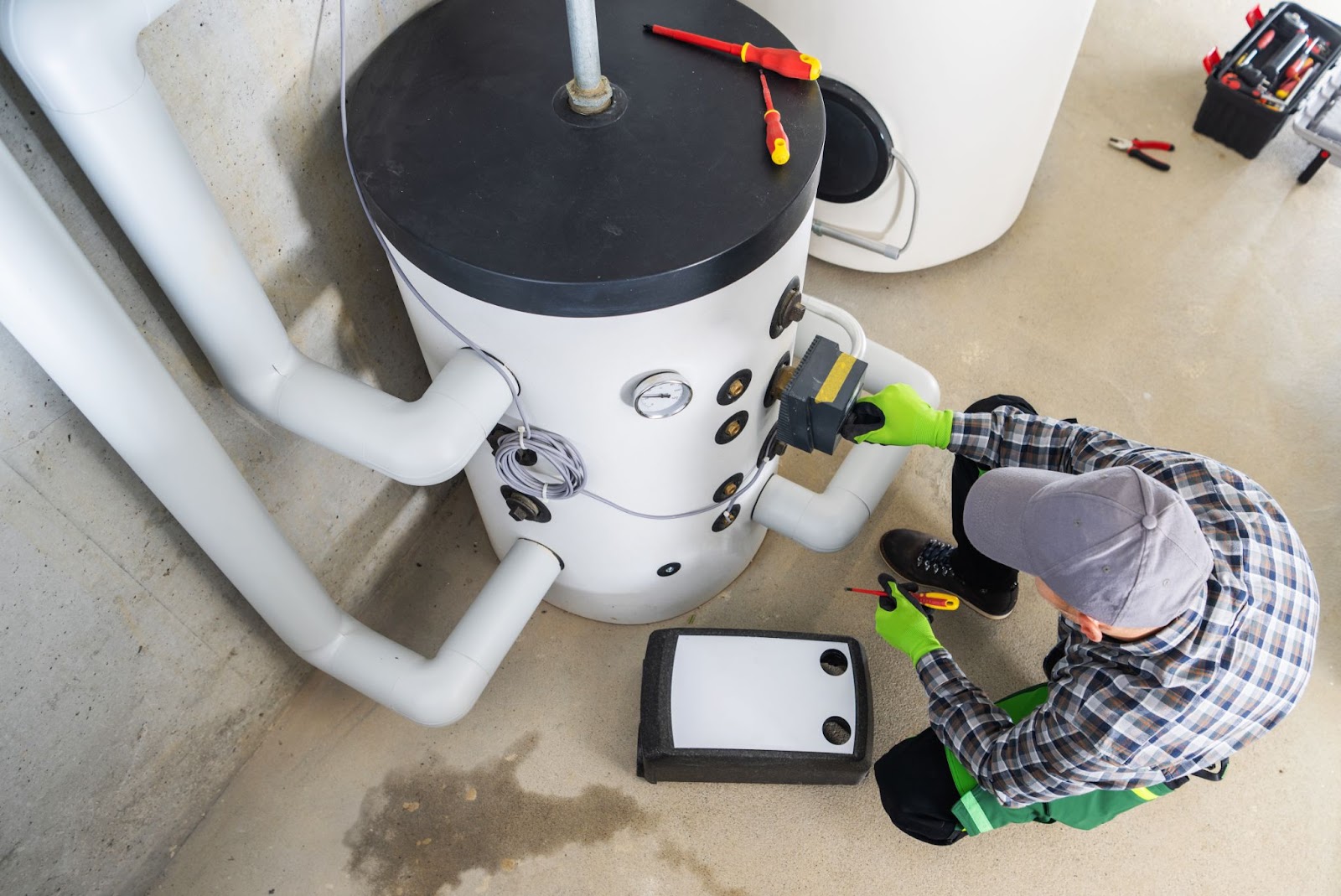
Top 5 Most Common Furnace Repairs for Homeowners
Maintaining a warm and comfortable home during the colder months is paramount for homeowners. A well-functioning furnace is at the heart of this comfort. However, like all home appliances, furnaces are prone to various issues that may require professional heating services.
Understanding these common problems can help homeowners identify and address them before they escalate into larger, more costly repairs.
Common Furnace Repairs
Faulty Thermostat
The thermostat acts as the command center for your furnace, regulating the home’s temperature by signaling the furnace to turn on or off. A malfunctioning thermostat can lead to no heat, intermittent heat, or problems with the fan. Symptoms of a faulty thermostat include the furnace not reaching the set temperature or frequent cycling. Repairing or replacing a malfunctioning thermostat is crucial for maintaining optimal home comfort and furnace efficiency.
Dirty Filters
One of the most straightforward yet often overlooked maintenance tasks is replacing the furnace filter. A clogged filter restricts airflow, forcing the furnace to work harder, leading to overheating and, in some cases, a system shutdown. Regularly changing the air filter can prevent this issue, promoting better air quality and furnace longevity.
Ignition or Pilot Control Issues
Modern furnaces rely on electronic ignition systems, while older models may use a pilot light to ignite the burners. Problems with these components can prevent the furnace from producing heat. Issues may arise from a dirty pilot orifice, a faulty flame sensor, or a malfunctioning ignition system. These problems require professional diagnosis and repair to ensure safe and efficient operation.
Mechanical Wear and Tear
Over time, a furnace’s mechanical components, such as belts, bearings, and motors, can wear out from everyday use. This wear and tear can lead to airflow problems, overheating, or even furnace failure. Regular maintenance can identify and replace worn components before they cause more significant issues.
Faulty Heat Exchanger
The heat exchanger is a critical component of the furnace, transferring heat from the combustion process to the air circulating throughout your home. A cracked heat exchanger can release carbon monoxide, a dangerous gas, into your home. This issue is a serious safety concern and requires immediate attention.
How to Address These Furnace Repairs
Knowing how to address furnace issues can save homeowners time and money and ensure their living spaces remain comfortable and safe during cold weather. Here’s how to tackle the top five furnace repairs most homeowners encounter.
Addressing a Faulty Thermostat
A faulty thermostat can lead to various heating issues in your home. Before seeking professional help, check if the thermostat is set to “heat” and ensure its batteries aren’t depleted. If problems persist, the thermostat may need recalibration or replacement. Upgrading to a smart thermostat could offer more precise control over heating and potential energy savings.
- Quick Fix: Replace batteries and ensure correct settings.
- Long-Term Solution: Consider upgrading to a smart thermostat for improved efficiency.
Tackling Dirty Filters
Clogged filters compromise airflow and efficiency, straining your furnace and potentially leading to overheating. Check your furnace’s filter monthly and replace it if you notice significant dust buildup. Generally, filters should be replaced every 90 days, but homes with pets or high dust levels may require more frequent changes.
- Quick Fix: Regularly inspect and replace the air filter.
- Preventive Measure: Keep a supply of replacement filters on hand for easy changes.

Solving Ignition or Pilot Control Issues
Ignition or pilot control problems can prevent your furnace from starting and require careful attention. If your furnace uses a pilot light, ensure it’s lit. A reset according to the manufacturer’s instructions may solve the issue for electronic ignition systems. If these steps don’t work, professional servicing is necessary to clean or replace components.
- Quick Fix: Attempt a system reset.
- Professional Help: Seek a technician for component cleaning or replacement.
Fixing Mechanical Wear and Tear
Mechanical components like belts and bearings wear out over time. Listen for unusual noises, such as grinding or squealing, which indicate mechanical issues. While some maintenance tasks, like belt replacement, can be DIY projects, others require professional expertise to ensure correct diagnosis and repair.
- DIY Task: Replace accessible worn parts like belts.
- Professional Task: Schedule regular maintenance checks for comprehensive care.
Repairing a Faulty Heat Exchanger
A cracked heat exchanger poses serious health risks by potentially leaking carbon monoxide into your home. This issue demands immediate attention from HVAC professionals. Do not attempt to inspect or repair the heat exchanger yourself due to the risk of carbon monoxide exposure and the complexity of the repair.
- Immediate Action: If you suspect a crack, turn off your furnace and call a professional.
- Safety Precaution: Install carbon monoxide detectors in your home for early detection of leaks
Other Furnace Repairs Homeowners May Encounter
Homeowners may encounter various furnace repairs beyond the most common issues previously discussed. Understanding these potential problems can help diagnose issues early and seek professional assistance when necessary. Here are additional furnace repairs homeowners might face:
Leaking Ductwork
Leaking or poorly sealed ducts can significantly reduce your heating system’s efficiency. The heated air may escape before reaching its intended rooms, leading to uneven heating and increased energy bills. Professional duct sealing or insulation can address these leaks, improving your heating system’s efficiency and performance.
Malfunctioning Blower Motor
The blower motor circulates air throughout your home. If it malfunctions, you may experience reduced airflow or no air movement, leading to inconsistent heating. Symptoms of a failing blower motor include strange noises during operation or a complete lack of fan function. Repair or replacement by a professional is necessary to restore proper function.
Thermostat Wiring Issues
Faulty wiring within your thermostat can cause loss of power or erratic behavior, affecting your furnace’s ability to heat your home effectively. Issues may include the stove running non-stop or not starting at all. Electrical problems of this nature are best diagnosed and repaired by professionals to ensure safety and proper functionality.
Blocked Condensate Lines
Modern high-efficiency furnaces often have a condensate line that removes water produced during heating. If this line becomes clogged, it can lead to water leaks and potential damage to the furnace or your home. Regular maintenance includes checking and clearing these lines to prevent blockages.
Cracked Burner
A cracked burner can affect the efficiency of your furnace and may pose a risk of leaking gas. Symptoms include an unusual odor or a stove that struggles to maintain the set temperature. This issue requires immediate attention from a professional to replace the damaged burner and ensure safe operation.
Limit Switch Problems
The furnace limit switch monitors the furnace’s internal temperature to prevent overheating. A faulty limit switch may cause the blower to run continuously, leading to wear and tear on the system. Replacing a malfunctioning limit switch is essential for maintaining safe furnace operations.
Inadequate Gas Flow
Problems with the gas line, such as leaks or obstructions, can hinder your furnace’s performance. Signs of gas flow issues include a yellow furnace flame (instead of blue) or a furnace that fails to heat adequately. These issues can be dangerous and should be addressed by a qualified technician immediately.
Addressing these additional furnace repairs promptly can help maintain your home’s comfort and safety. Regular inspections and maintenance by certified professionals are the best way to identify and resolve these issues before they become major problems.

Preventative Measures for Common Furnace Repairs
Ensuring the longevity and efficiency of your home’s heating system involves more than just addressing repairs as they arise. Proactive maintenance can significantly reduce the likelihood of encountering common furnace issues. Here are practical tips for homeowners to prevent frequent furnace repairs:
Regular Filter Replacement
One of the simplest yet most effective ways to keep your furnace running smoothly is by regularly replacing the air filter. A clean filter ensures optimal airflow, prevents dust and debris from entering the furnace, and enhances overall air quality. Check the filter monthly and replace it at least every 90 days or more frequently in homes with pets or high dust levels.
Annual Professional Maintenance
Scheduling an annual inspection and maintenance service with a certified HVAC expert can help identify and rectify potential issues before they escalate. This service typically includes cleaning the system, inspecting for wear and tear, and making necessary adjustments or replacements. Regular professional maintenance not only prevents common repairs but also extends the lifespan of your furnace.
Keep Vents Unblocked
Ensure all vents and air returns in your home are free of obstructions, such as furniture, curtains, and rugs. Blocked vents restrict airflow, causing the furnace to work harder and increasing the risk of overheating and damage. Regularly cleaning vents also prevents dust buildup that can impact system efficiency.
Install a Programmable Thermostat
Using a programmable or smart thermostat allows you to set your heating system to operate more efficiently. By reducing the temperature when you’re asleep or away from home, you can decrease the workload on your furnace and extend its service life, all while saving on energy costs.
Monitor the System’s Performance
Pay attention to your furnace’s performance, including any unusual noises, smells, or fluctuations in heating efficiency. Early detection of these symptoms can lead to quicker diagnoses and repairs, preventing minor issues from turning into significant problems.
Ensure Proper Insulation and Sealing
Properly insulating and sealing your home keeps warm air inside and cold air out, reducing the heating demands on your furnace. Check for drafts around windows, doors, and other areas and seal them. Adequate attic insulation also contributes to a more consistent indoor temperature.
Educate Yourself on Basic Troubleshooting
Familiarizing yourself with basic furnace troubleshooting for issues like a blown fuse, a tripped circuit breaker, or a malfunctioning thermostat can save you time and money. Simple fixes can often resolve common problems without professional intervention.
Develop a Relationship with a Trusted HVAC Professional
Having a go-to HVAC technician you trust can be invaluable. They can provide personalized advice based on your home’s specific needs and history, offering solutions that prevent recurring issues and optimize your heating system’s performance. Engaging with a reliable service provider for your heating services ensures the longevity of your system and your home’s comfort and safety.
These preventative measures can significantly reduce the frequency and severity of furnace repairs, ensuring a warm, safe, and comfortable environment throughout the colder months.
Don’t wait for a minor issue to turn into a major inconvenience. Check out our Kerivan-Lane blog to learn more about our professional HVAC services.